According to experts, ancient Egyptian tombs discovered in Tel El-Deir will change the course of Damietta’s history.
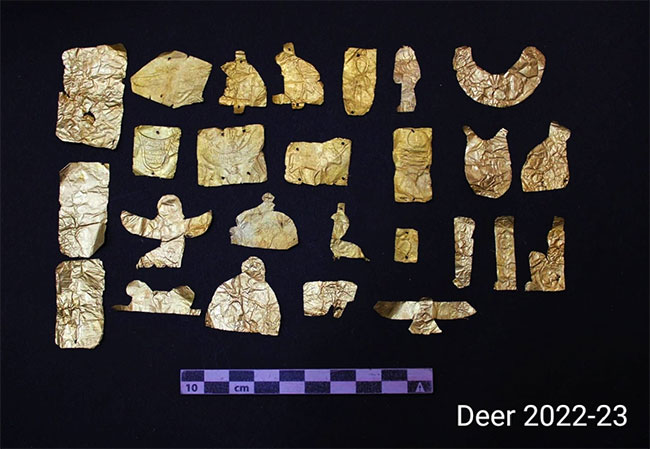
Archaeologists excavating at Tel El-Deir in Damietta in Egypt have unearthed several ancient tombs that are simple yet highly significant.
Tel El-Deir is an ancient site that dates to at least the Neolithic. Archaeologists have worked at this place for a long time. Some years ago, scientists unearthed stone sarcophagi that gave researchers a better understanding of the people who lived in this area.
Credit: Ministry of Tourism and Antiquities
Damietta “is known in ancient Egyptian times as Dami or Damit, as Tamati in Coptic, and as Tamamates in Greek. It became Damietta in European languages and in Arabic. In ancient times, it was a part of Smabhdt Nome, a region of Lower Egypt, where the Amun (God of Thebes) was worshiped. It bears number (050109) in the atlas of archaeological sites of Damietta and it is considered as one of its important archaeological hills.” 1
The discovered mud-brick tombs date to the Saities period of the 26th Dynasty. The Egyptian archaeological mission also found a collection of gold items that once covered buried human remains at the site. The burial objects depicted ancient Egyptian deities Isis, Bastet, and Horus (in the form of a winged falcon).
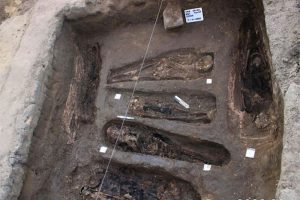
Credit: Ministry of Tourism and Antiquities
“Funerary amulets of different shapes and sizes were also unearthed, along with a headrest. In addition, a number of canopic jars representing the four sons of Horus were found, as well as a collection of statues representing the deities Isis, Neftis, and Djehuti.
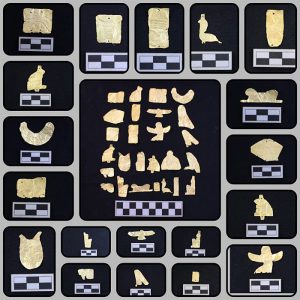

The mission previously uncovered a number of graves belonging to different eras. These tombs indicated the various forms of burial rites performed by the area’s inhabitants throughout history,” Ahram Online reports.

Professor Qutb Fawzi, head of the Central Administration for Marine Facility and Sinai, and head of the archeological mission added miniature samples of canopic jars for preserving the deceased’s intestines during the embossing operation, and statues of the Four Sons of Horoscope were found.
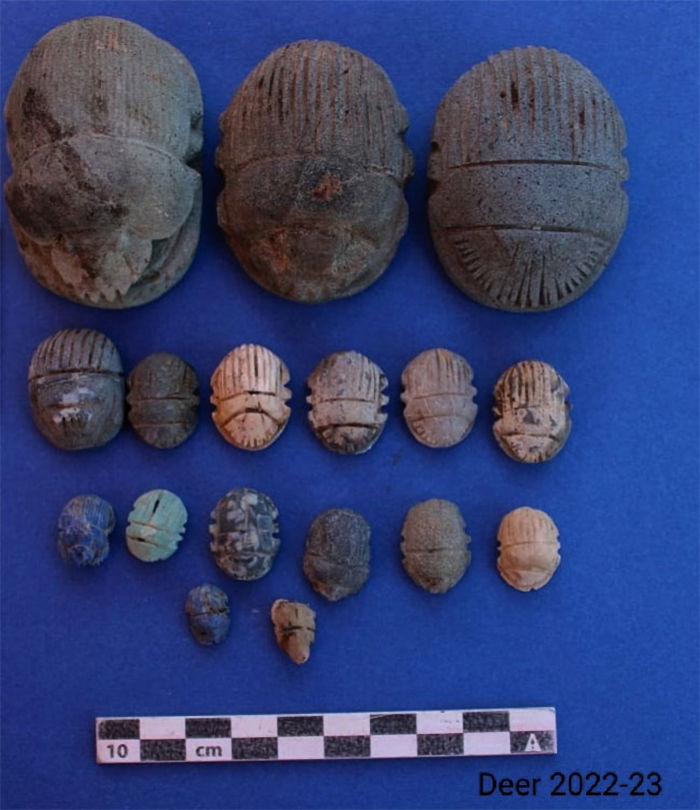
“Canopic jars were ritual vessels containing internal organs removed from the body of the deceased during the mummification process.
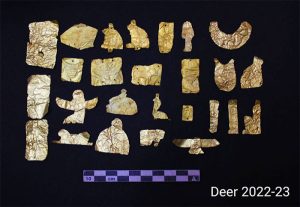
Their name “canopies” comes from Canopus, an ancient Egyptian city located in the Nile Delta, a place where they were first discovered.” 2
“It is a very important scientific and archaeological discovery as it will rewrite the history of Damietta,” asserted Mostafa Waziri, Secretary General of the Supreme Council of Antiquities.